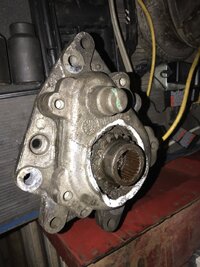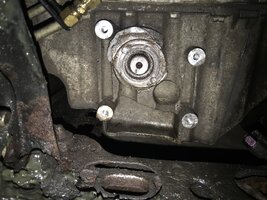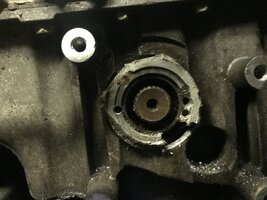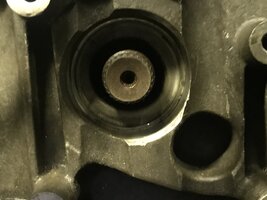This thread saved my ass this weekend! The housing cracked off at the oil pan just like others have done. I don't have much to add that others haven't covered. I mostly wanted to say thank you for everyone that's posted in here. The only advise I can give is be very careful with how far you drill into the old bearing. In fact, I marked my bit with tape to be sure. I broke 3 drill bits during this project. Take your time, be patient and you'll eventually get it.
Also, if you are replacing the actuator as well, test it first. Plug it in and leave it dangle. Turn the key to run (no need to start it) and flip it to 4 wheel drive. The plunger on the actuator should poke out about 1 1/8 inches. Flip the 4 wheel drive off and then check it again. It will only be out about 1/2 inch. The actuator I received with the housing is bad, and it cost me about an hour because those little 8mm bolts that hold the actuator to the housing are a pain in the ass to remove without taking the housing off the truck.
Again, thanks everyone for posting, and my wife thanks you too because it saved us at least $500 in the checkbook!
Also, if you are replacing the actuator as well, test it first. Plug it in and leave it dangle. Turn the key to run (no need to start it) and flip it to 4 wheel drive. The plunger on the actuator should poke out about 1 1/8 inches. Flip the 4 wheel drive off and then check it again. It will only be out about 1/2 inch. The actuator I received with the housing is bad, and it cost me about an hour because those little 8mm bolts that hold the actuator to the housing are a pain in the ass to remove without taking the housing off the truck.
Again, thanks everyone for posting, and my wife thanks you too because it saved us at least $500 in the checkbook!






